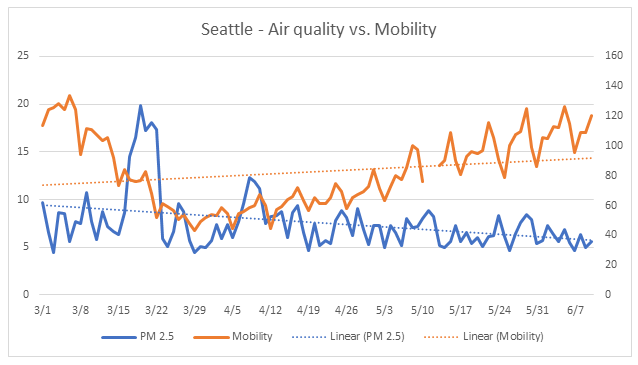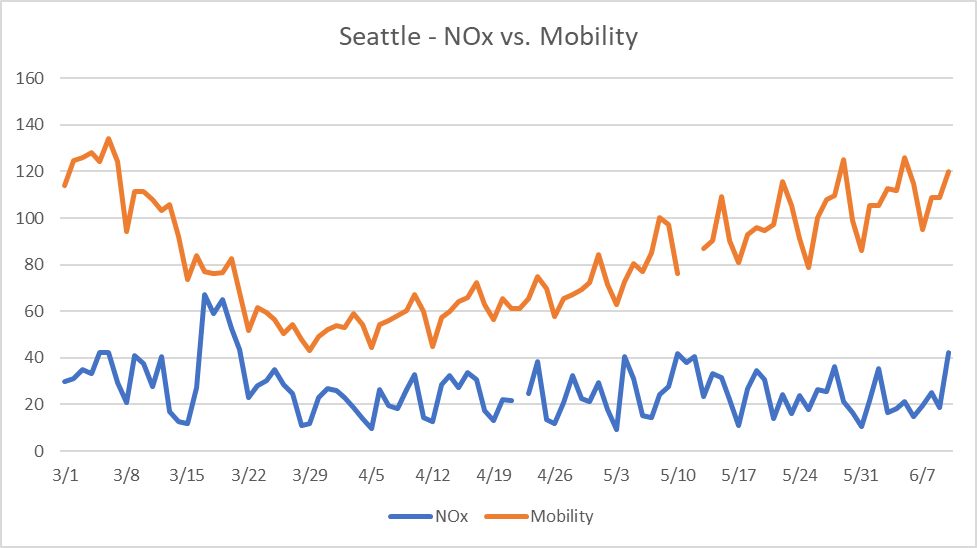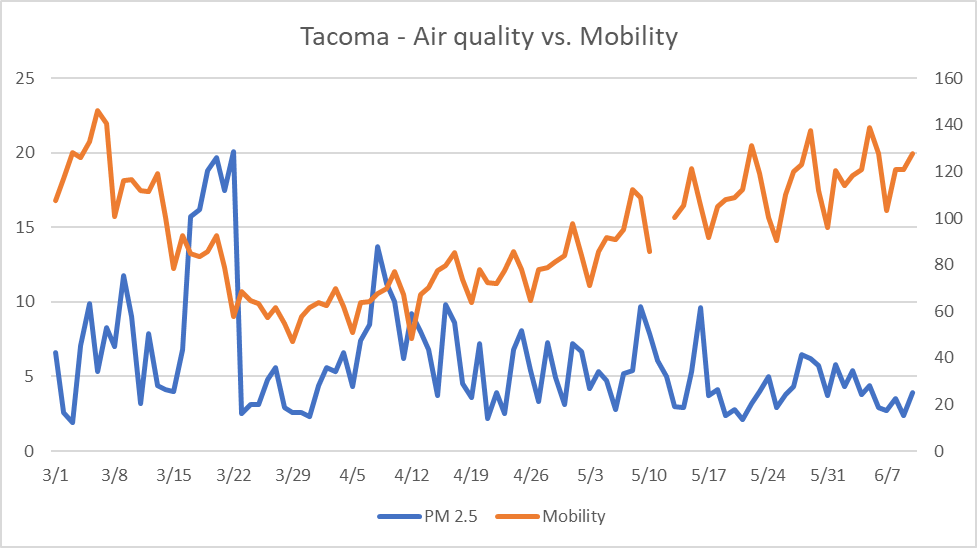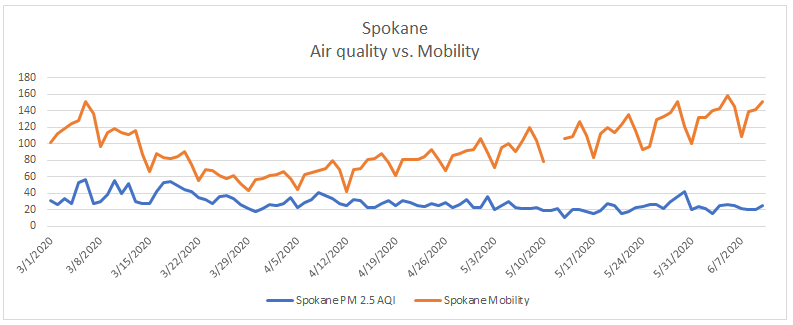As the state slowly reopens, mobility has been steadily increasing over the last two months. According to data from Apple Maps, mobility in Washington state reached its lowest level at the end of March. Since that time, the number of requests to Apple Maps has slowly increased. In both Seattle and Tacoma, requests for maps from drivers are almost at the level they were in early March. Transportation patterns have changed – there are fewer commuters – but people have significantly increased the amount they drive.
The dramatic change in mobility offers an opportunity to test the impact on air quality. Has the increased driving also increased air pollution? Based on the data, the answer is “no.”
Using data from the Puget Sound Clean Air Agency, I compared levels of particulate matter (PM 2.5) and nitrogen oxides (NOx) to the data from Apple’s COVID-19 mobility trends. The data from Apple measure “requests for directions in Apple Maps,” so they do not necessarily reflect total miles traveled.
Although mobility has increased significantly in the last two months, levels of particulate matter have stayed basically the same, or declined slightly. There are many factors that influence air quality. The fact that a significant increase in mobility had no discernible impact on particulate matter, however, is telling. It indicates the potential air quality benefits of additional regulation are small.

The data show the same thing when we look at nitrogen oxides, which are more directly associated with auto emissions. Levels of NOx are at the same level in early June as they were in late March when mobility reached its lowest point.

The same trend appears in Tacoma. Mobility has increased even more over the last month than in Seattle, and yet levels of particulate matter have declined. Again, transportation patterns have changed and the mobility data likely reflect more local trips. The traffic that is typical on I-5 through Tacoma isn’t occurring right now. That, however, was true in late March, and yet air quality has not worsened even as people are taking more trips.

There are certainly confounding factors, including weather. Rainfall for most of May was typical. It is hard to disaggregate all of the influences, but the influence of cars on air quality is imperceptible in the data.
Emphasizing that point is the fact that the same pattern appears in Spokane, with a significant increase in mobility but no impact on air quality. The data for Spokane come from the EPA and reflect the Air Quality Index (AQI) for PM 2.5. The fact that the graph looks similar to those from Seattle and Tacoma indicates that weather probably isn't driving the data.

The COVID-19 shutdown has provided a natural experiment to test the impact of reduced human activity on a number of environmental factors. With regard to air quality in Seattle and Tacoma, so far, the data show that cars and mobility have a very small impact.



